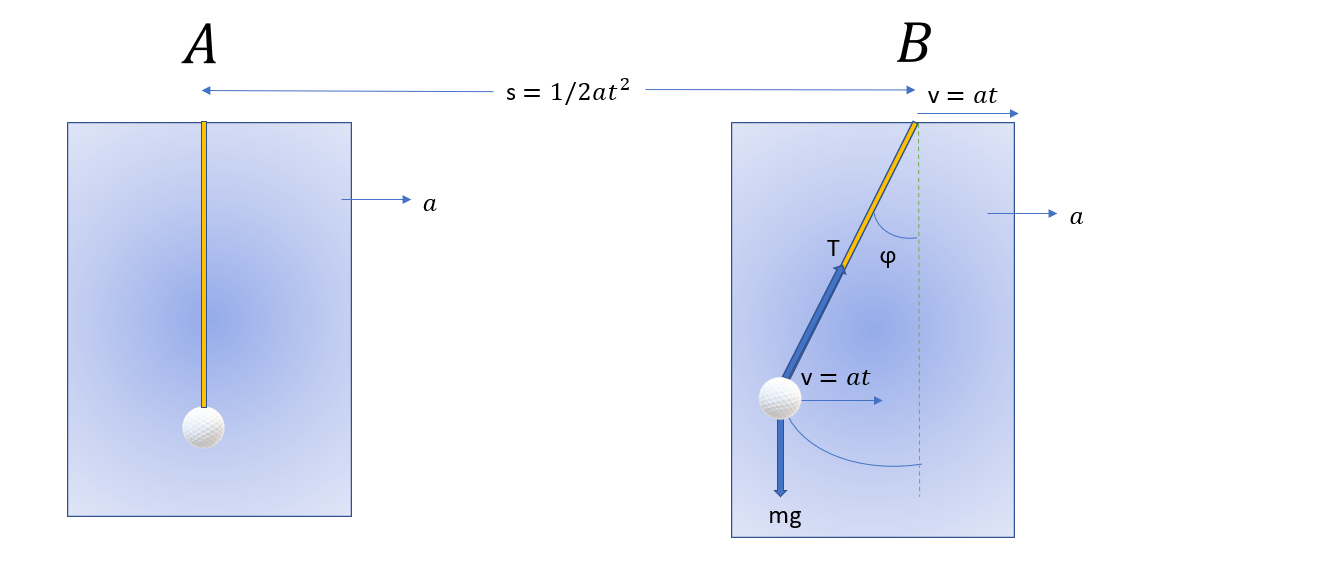I was doing Kleppner-D.-Kolenkow-R.J. and I came across the following problem:-
A pendulum is tied vertically to a car at rest, the car suddenly accelerates at a rate A. Find the maximum angle of deflection $\phi$ through which the weight swings.
MY TRY: I saw the solution of this problem in the book which uses car's frame of reference, which was fairly simple.
I tried to do it in the ground frame of reference.
Deflection of the pendulum will be maximum when the angular velocity of the mass hung to pendulum relative to the hanged point will be zero, hence the velocity of mass relative to the car, perpendicular to the string is zero. But the constraint of a taut string doesn't allow velocity of mass relative to the car along the string also. So, velocity of mass relative to car is zero at the point of maximum deflection.
 I have the following two tools to solve the problem:-
I have the following two tools to solve the problem:-
- Apply Work energy theorem to the mass.
- Use the string constraint i.e. the acceleration of the mass and the topmost point along the string will be equal at any instant i.e. $T-mgcos(\theta)=masin(\theta)$

The tension force and gravity are only two forces acting on the mass. But, how could one find the work done by tension on the mass in the journey from $A$ to $B$. Any hint would be a great help!
